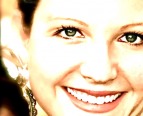Video out of University of Mary Washington
"DATA SMOG: too much information can become a barrier in our lives"

The above video compliments "The Big 6" approach to teaching information and technology skills.
The Big6 Process for Information Problem-solving (Eisenberg & Berkowitz, 1987)
1. Task definition
a. Define the problem.
b. Identify the information needed.
2. Information Seeking Strategy
a. Determine all possible sources.
b. Select the best sources.
3. Location and Access
a. Locate sources.
b. Find information within sources.
4. Use of Information
a. Engage (e.g., read, hear, view).
b. Extract relevant information.
5. Synthesis
a. Organize information from multiple sources.
b. Present the result.
6. Evaluation
a. Judge the result (effectiveness).
b. Judge the process (efficiency).
REFLECTION
In my previous life as a high school art teacher, I was often disappointed by my students’ research skills. I also found myself wondering if a) elements of research papers had been plagiarized, b) if the students had considered using any source other than an Internet search engine, and c) I questioned their ability to pull it all together. I talked about these concerns with my class but they either listened to keep me pacified or they made excuses. A few students seemed to naturally understand the process of research: knowing what to look for, knowing how to look for it, seeking the correct information, evaluating it and then using that information to present it in a new way.
After careful reading on the topic of literacy in the information age, I have come to realize (with a slap to my forehead) that my students’ lack of research skills was as much my own fault as anyone else’s. If I wanted my students to research well, make good choices, and to use and synthesize the information they gathered then I should have provided them with the necessary skills. Today’s literate person must be able to do much more than read and write; the literate person must also be able to filter through the overwhelming amounts of information readily available at one’s fingertips, decipher what is important and then use that information in a meaningful way… no short order (NCTE, 2008).
Below are three lesson ideas that I have considered when thinking about teaching information and media literacy in conjunction with the art curriculum.
Design a brochure for an art gallery or museum
Grade level: 4-6
Content area: art history & visual arts
Student product: brochure/flyer
Lesson overview:
* Examine advertisements, brochures and flyers from various sources
* Discuss the elements in an effective brochure. What makes some brochures more appealing than others (layout, catchy phrases, bold text, color, etc.)? List important elements to include when developing a brochure.
* Use Internet, museum books, & videos to research a museum or art gallery (choose from teacher list)
* Compile and sort information (print web pages, write bulleted lists, etc.)
* Produce a brochure describing museum highlights and cite appropriate references
* List museum highlights & describe appeal
* Collect visuals (Internet, magazines, photocopy, hand draw, etc.)
* Design brochure, may be designed in a variety of formats: Microsoft publisher, comic strip (Toondoo), hand drawn, etc.
* Grade using a rubric
* Reflect on media sources and brochure development in class discussion and journal in sketchbook
Cubism: What is it? What does it look like and who did it?
Grade level: 4-6
Content area: art history
Student product: Power Point presentation
Lesson overview:
* Use library references, video and Internet to investigate and collect information about Cubism and Cubist artists
* Reflect on Cubist elements by responding to teacher/student blog
* Choose 3 Cubist artists to highlight in a power point presentation
* Describe similarities and differences among selected artists
* Include three visual examples for each artists and list the Cubist elements in each artwork
Careers in art
Grade level: 4-6
Content area: art
Student product: poster presentation
Lesson overview:
*Choose an art related career
*Collect information about the career (provide rubric for requirements)
*Use at least 3 of the following methods to collect information:
-Internet search
-Email a professional
-Interview a professional
-College website/catalogues
-Business or professional website
-Career videos
-Professional products (examples: interior design plans, fashion designer drawings, advertisements, etc.)
*Design a poster to display the most important information about the chosen career (include text and graphics).
See References

 RSS Feed
RSS Feed

